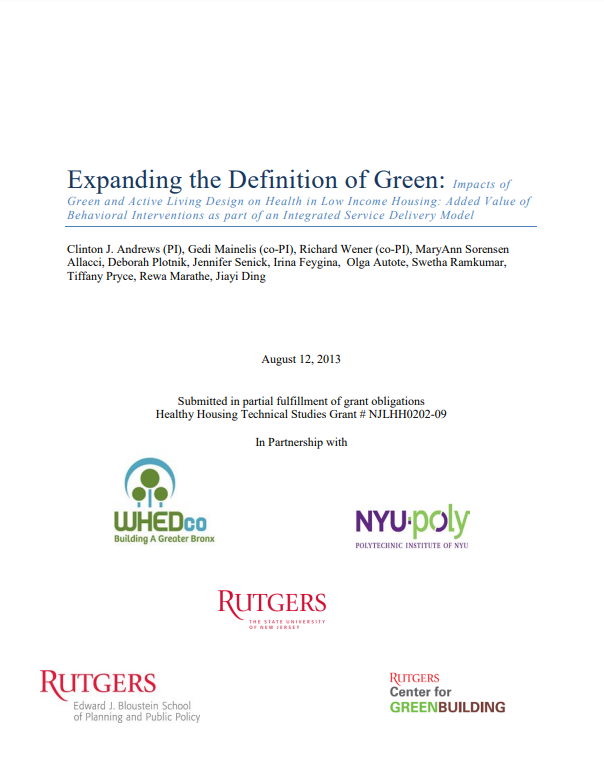The Center recently completed a three-year community based collaborative research study supported by the HUD’s (US Housing & Urban Development) Office of Healthy Homes and Lead Hazard Control. The longitudinal quasi-experimental research evaluated opportunities to improve building operations, design, and occupant behaviors toward better indoor air quality and occupant health outcomes for lowest income vulnerable residents of the South Bronx. A follow on project also funded by HUD, focuses on the development of new cost-effective methods for pest infiltration and other types of building damage along with rapid BIM models.
Green Buildings and Public Health
Working with the Women’s Housing and Development Corporation (WHEDco) at their South Bronx, NYC affordable housing apartment building, the Center advanced an initiative to support participants’ development of health promoting behaviors through building and apartment level informational activities and materials. Residents of the South Bronx have some of the poorest health outcomes for many chronic diseases. A series of interventions on an individual apartment level and on a building level were introduced to help reinforce the program of the housing provider to improve occupants’ health status. Participants were encouraged to integrate into their lives suggested healthy eating, active living, and improved indoor air quality strategies that were both affordable and accessible. Evaluations of these initiatives have indicated that improvements in air quality and reported health status are possible with interventions that participants are able to integrate into their economic and social environments. Other findings helped identify limitations to improved conditions and point to the need for further work to mitigate housing safety and hazards and to empower residents for increased health promoting behaviors.
Behavioral Research
Our evaluation of green affordable housing incorporated a longitudinal and quasi-experimental collaborative research design. Meetings with our partner community organization, focus groups, and the formation of a Residents Advisory Committee were key to helping us develop an interview protocol with appropriate recruitment and intervention strategies.
Forty participants were offered “props” or supplies as well as best practices guides for improving health promoting behaviors, indoor air quality, and energy efficiency in their apartments. Indoor air quality testing conducted in conjunction with Rutgers School of Environmental and Biological Studies indicated that participants who used the alternative low- or no-toxin cleaning strategies significantly improved the readings of indoor particulate matter and some volatile organic compounds (VOC’s). Participants also demonstrated increasing interest in the vegetable roof garden as well as using a supplied reusable water bottle for increasing water consumption.
Findings
Our findings demonstrated that there are challenges for balancing energy efficiency and ventilation, and that occupants can improve the quality of their apartment air through simple and inexpensive changes in household products that they can incorporate into their everyday activities. Our research also suggested that feedback about energy consumption and how residents might “painlessly” reduce electric consumption may lead to reduced utility bills at the apartment level and therefore reduced economic stress.
